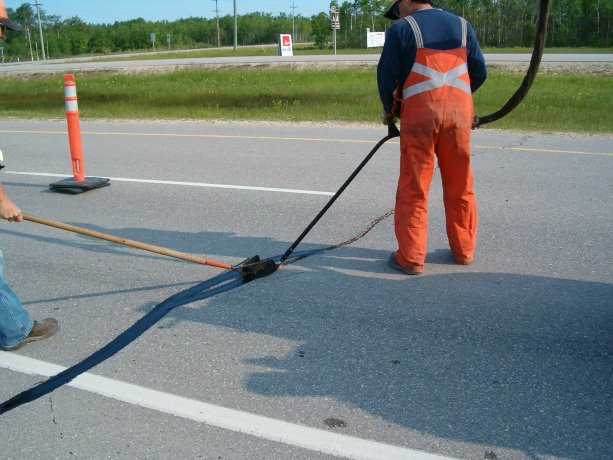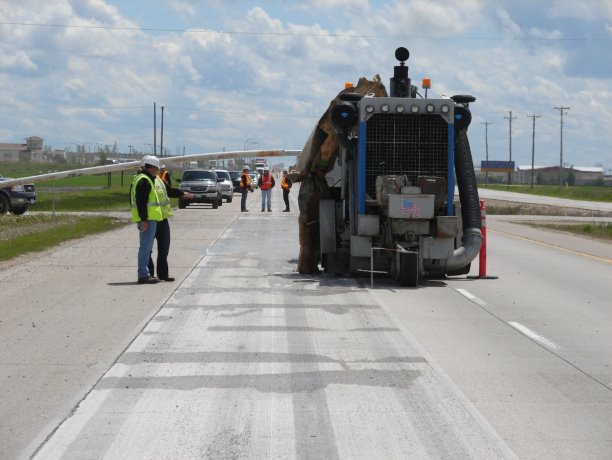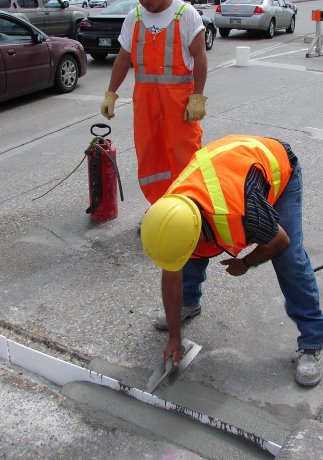Roadbuilding is one arm of construction that has been far ahead of the curve when it comes to sustainability.
Repurposing or recycling various materials for roadwork has been standard practice for a number of years, driven by more than environmental reasons.
"This industry has been working hard to green itself since before we used terms like green," said Ahmed Shalaby, professor and head of the University of Manitoba’s department of civil engineering. "The economics works."
Shalaby is also founder of the university’s Pavement Research Group.
Given the high cost of road construction and maintenance, processes such as micro-surfacing, diamond grinding and hot and cold in-place asphalt recycling have been used for many years to fix or extend the life of roads.
But, sustainable road construction doesn’t always mean greener solutions. As well, the use of recycled materials may not always be the best choice.
"It’s very important to consider the life span to be sure the final material will be the same as a product manufactured from virgin materials," said Hassan Baaj, professor in the department of civil and environmental engineering at the University of Waterloo.
Baaj is also a member of the university’s Sustainable Pavement Engineering project.
At Waterloo, researchers have been working to increase the percentage of recycled asphalt pavement that’s used in hot-mix asphalt.
With the lofty goal of 100 per cent, a big increase from today’s 15 per cent, Baaj said it has to be determined how high the mix can go without compromising performance.
The use of materials often destined for the dump is also under close scrutiny. Asphalt shingles show promise. After being crushed and screened, they’re added to asphalt.
Another ingredient is crushed concrete or crushed cement, which when added to asphalt, reduce noise and add skid resistance, Baaj said.
Another additive is nylon fibre from discarded industrial carpeting.
It doesn’t degrade and it strengthens road beds.
In the last 1.5 years in Winnipeg, two tests have been conducted on a cycling path and parking lot.
"Used with cement and other materials, over soft clay soils, the nylon-fibred mix has held up well," Shalaby said.
Another budding ingredient is tire rubber.
In Canada, roughly 35 million scrap tires are retired each year.
For roadbuilding, the tires are either shredded or ground into crumb rubber, a type of powder, Shalaby explained.
While there’s a shortage of design and performance data, it’s thought that the rubberized asphalt can be used for lightweight embankments, crossing soft subgrade soils, pavement frost barriers, retaining walls, bridge abutment backfill, and as a drainage layer for edge drains.
Testing is being done in Manitoba where 300 mm tire shreds were used in the base layer of a road embankment.
In Edmonton, an embankment at a new major bridge approach is also putting the rubber to the road.
"Another development is permeable pavement, being tested on low-volume surfaces like parking lots," Shalaby said.
Inter-locking concrete pavement or porous asphalt are used. Instead of allowing water to run-off and carry contaminants to downstream water sources, permeable pavement absorbs water. However, the product has limited applications because it works only where the soil can absorb water.
There has been some success with lowering the temperature when mixing asphalt. Less energy is used.
Practiced in Europe for the last 20 years, warm-mix asphalt started to stick in Canada roughly a decade ago.
Hot-mix asphalt is prepared at about 150 C, and warm-mix, at 120 C, 20 per cent cooler, resulting in, substantive energy savings, Shalaby said.
"There is a huge and growing market for warm-mix as well as shingle recycling," he said.
Cold in-place recycling methods continue to advance with new mixing techniques.
Recycled liquid asphalt can now be emulsified or turned into a foamy asphalt cement.
To create foam, water is injected into bitumen. The foam makes mixing easier and requires less water.
"Working with foam, we can facilitate the work and get better results," Baaj said. Pavement management is also gaining traction.
"A lot of municipalities are considering advanced technology for data collection of traffic and road degradation," he said.
The information is analyzed in conjunction with pavement management tools.
A life cycle analysis of roads is done to develop strategies for maintenance and rehabilitation with the goal of anticipating cracks and potholes before they appear.
"A Dutch cycling path embedded with solar panels is being carefully watched," Baaj said, adding that roads are coming embedded with solar panels that will produce energy as well as collect road data.
Further down the road is "self-healing" asphalt which can repair cracks, which is in use in Europe. When he and his wife travel, she takes photos of roadside scenery. Baaj instead, is more interested in cracks in the road.

1/4
Photo:
2/4

3/4












Recent Comments
comments for this post are closed